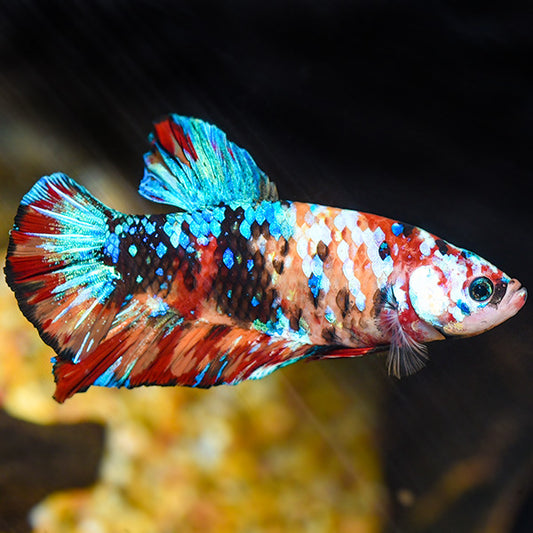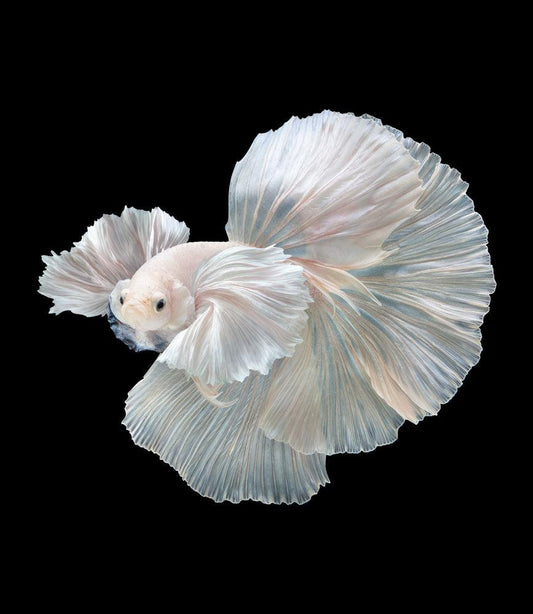Betta Fish Care: Important Tips for a Healthy and Happy Pet
Betta Fish Care: Important Tips for a Healthy and Happy Pet
Blog Article
Breeding Betta Fish: a Comprehensive Step-By-Step Overview to Efficiently Raising Infant Bettas From Eggs to Their Adult Years
Breeding Betta fish is a precise endeavor that needs careful preparation and execution to guarantee the effective growth of fry from eggs to mature fish. Choosing genetically diverse breeding pairs with desirable features is only the start; producing an optimum setting and comprehending the intricacies of the reproducing process are similarly essential. As the male Betta carefully constructs a bubble nest and guards the priceless eggs, the succeeding stages of treatment and change demand interest to information and understanding of ideal methods. How does one browse the difficult yet satisfying path of nurturing these vivid creatures to adulthood?

Choosing Reproduction Pairs
When starting the trip of reproducing Betta fish, selecting the best reproduction sets is critical to attaining preferable characteristics and a healthy and balanced family tree - betta fish. The initial step in this process is to recognize the particular traits you wish to enhance or preserve, such as shade, fin type, and body shape. It is necessary to pick genetically varied pairs to stay clear of inbreeding, which can lead to health issues and undesirable characteristics
Examine prospective reproducing prospects very carefully. A healthy male Betta should exhibit lively shades, an energetic disposition, and well-formed fins, while the woman should also display dynamic pigmentation and a rounded stubborn belly, indicating preparedness for spawning. Observing the character of both fish is essential, as aggressive or excessively shy individuals may not reproduce successfully.
Keeping records of the parent fish's origins can assist you track genetic qualities and possible concerns. Eventually, investing time in the option process will significantly enhance the possibility of creating solid, vivid spawn that satisfy your reproduction goals.

Preparing the Reproduction Container
Creating an optimal breeding setting is a vital action after selecting appropriate sets for Betta fish. The breeding storage tank ought to be especially developed to supply comfort and promote the all-natural breeding behaviors of the fish. Begin with a container size of at the very least 10 gallons to ensure appropriate space for both the male and women Bettas.
Keep a mild purification system to keep the water tidy while staying clear of strong currents that can worry the fish. Furthermore, an air stone can be included in offer oxygenation without interfering with the water surface area way too much.
Temperature policy is vital; go for a secure series of 78-82 ° F(25-28 ° C) utilizing a trustworthy heating unit. The pH degree should be maintained between 6.5 and 7.5, and regular water adjustments are required to guarantee high water quality.
Incorporate drifting plants or spawning sponges to develop concealing spots for the woman, while likewise urging bubble nest structure by the man - betta fish. Lastly, make certain the container is devoid of sharp decors and any kind of possible hazards, as the well-being of the fish ought to constantly be focused on during this essential stage of breeding.
The Reproduction Refine
Usually, the reproducing process for Betta fish entails a collection of distinctive and visible behaviors that indicate readiness for reproduction. The male Betta begins by building a bubble nest at the water's surface area, which works as a website for the fed eggs. This nest is essential, as it provides a safe environment for the eggs until they hatch out.
Once the nest is developed, the man will certainly show courtship habits, such as flaring his fins and showing vibrant colors to bring in the woman. The lady, upon picking up the man's readiness, will respond by showing vertical red stripes along her body, signaling her receptiveness.
When the female strategies, the male involves in a mating dance, often leading to an embrace referred to as the "spawning." During this embrace, the woman releases her eggs, which the male fertilizes right away. The fertilized eggs then fall to the bubble nest, where the male very carefully accumulates and returns them to the nest. Following this, the male assumes duty for guarding the nest and ensuring the security of the eggs till they hatch, commonly within 24-36 hours. This stage is important in the reproducing process, laying the foundation for effective fry advancement.
Taking Care Of Betta Fry
Taking care of Betta fry requires cautious focus to their setting and nourishment to guarantee healthy and balanced development and development. After hatching company website out, Betta fry are extremely tiny and prone, requiring a steady and tidy environment. Keeping a water temperature between 78 ° F and 80 ° F is critical, as Betta fry thrive in warm problems. In addition, guarantee that the water is without dangerous contaminants; normal water adjustments of 10-20% are recommended to maintain optimum water high quality.
Feeding Betta fry is similarly essential. They should be provided infusoria or carefully crushed top quality fry food, as their mouths are too small to take care of bigger particles. As they grow, you can slowly present bigger foods, such as child brine shrimp or powdered flakes, to ensure they obtain sufficient nutrition. Feed them tiny amounts a number of times a day, being mindful not to overfeed, which can lead to water top quality concerns.
Transitioning to Grownup Bettas
As Betta fry mature, transitioning them to adult Bettas is an important phase that needs cautious monitoring of their environment and social communications. This process commonly starts when the fry get to around 6 weeks of age, at which point they can be gradually introduced to a more structured living setting.
To promote this change, it is vital to guarantee that the water parameters-- such as temperature, pH, and ammonia levels-- are optimum and secure. Grown-up Betta fish grow in warm water (around 78-80 ° F) with a pH of 6.5 to 7.5. Slowly accustom the fry to these conditions to decrease anxiety.
Social interactions are an additional crucial aspect; anonymous man Bettas are infamously territorial and hostile. Consequently, it is suggested to different males into private storage tanks as they mature. Female Bettas can be housed together, but care needs to be taken to monitor for signs of hostility.
Additionally, dietary adjustments ought to be made as the fry grow. Incorporate premium pellets and live foods to support their growth and health and wellness. By managing these elements efficiently, you can advertise an effective change to their adult try here years for your Betta fish.

Conclusion
Successful reproduction of Betta fish needs mindful interest to information throughout the entire process, from picking genetically diverse pairs to giving ideal treatment for fry. Furthermore, a balanced diet and gradual adaptation to adult environments are vital for the growth and development of Betta fish.
Report this page